Driving in Italy top tips!
Driving in Italy has quite a reputation! Whilst some of our villas in Italy are within walking distance of shops and restaurants, and within easy access of public transport links, many are more rural and having a car with you will be crucial. If you’re staying in a city, then Italian cities typically have excellent transport links, whether that’s the train, metro, bus or even boat (as in Venice)! Certainly, driving in Italian cities can be a bit of a baptism of fire if you’re not used to Italian driving, especially when you take into account the width of some of Italy’s roads, Limited Traffic Zones (ZTL) and one way streets. But if you’re staying in the countryside or outside the larger cities, than having your own car can provide you with much greater freedom to explore. We’re big fans of Italy\’s smaller villages and most would be much harder to reach if dependent solely on public transport. By and large, unless you’re on a city break, we do tend to recommend hiring a car. The only exceptions for us would be in Cinque Terre (where having a car is pointless) or on the Amalfi Coast (where driving a car can be pretty terrifying quite frankly!)
That said, we are also aware that hiring a car in Italy can make people nervous so we thought we’d try and take some of the stress out of the process. We’ll give you some top tips about driving in Italy as well as some advice about hiring a car in Italy. Plus, whether you’re a first time visitor to Italy or a seasoned traveller who couldn’t resist the lure to return, it’s always sensible to remind yourself of the rules so that you can feel competent and confident on the Italian roads.
Top tips for hiring a car in Italy
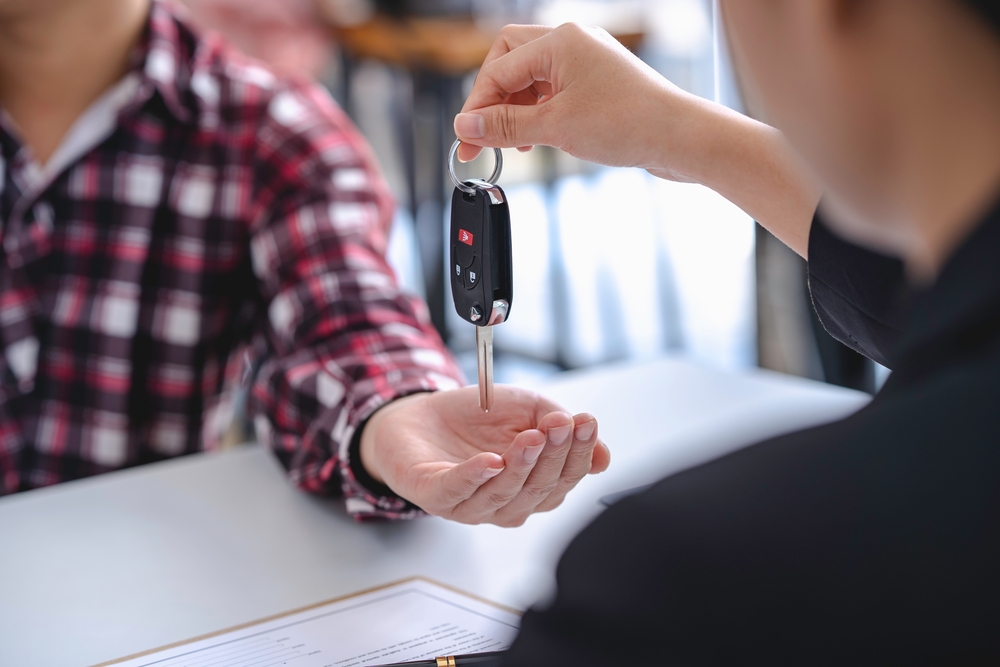
- Book as early as possible – car hire prices only ever increase the nearer to the time of your stay.
- Make sure you bring your domestic driving license with you when hiring a car in Italy. Some companies also require additional photo ID so always have a passport with you too.
- Check whether you also need an international driving permit to hire a car in Italy. UK and EU citizens don’t require one but non EU drivers will require an International Driving Permit along with their normal driver’s license to be able to hire a car in taly.
- Some car rental companies also require you to have held a driving license for a certain period of time before allowing you to hire a car in Italy. Check with your car hire company if you think this may apply to you.
- Consider taking out car hire excess insurance – the excess on car hire in Italy can be hefty. Car hire excess insurance can give you peace of mind that if you do cause damage to the car, you won’t be faced with a large bill.
- Make sure you always have a credit card with you when hiring a car – car hire companies will always need a credit card before allowing you to take a car. A debit card if not sufficient. Bear in mind that the car rental company may put a large hold on your credit card for the duration of the rental period. This hold can be surprisingly large so check that your credit card has a sufficient limit to allow you to use the card for other purchases during your stay should you need to.
- Take a video of the car upon collection so you have proof of the state it was in before you start driving. Take photos of any damage. You may be surprised that Italians often don’t consider a car to be damaged if the scratch or mark is under a certain size but take a photo just in case.
- Make sure when returning your car, you return it with a full tank of fuel (unless you have pre-paid for it to be filled for you).
- Since the legal driving age in Italy is 18, you will need to be 18 to drive a car in Italy. You will actually need to be 21 to rent a car in Italy. It is possible to ride a moped (not exceeding 50cc) from the age of 14 and motorcycles up to 125cc from the age of 16.
- Most cars in Italy have manual gearboxes. If you specifically want to drive an automatic car, make sure that you book this in advance.
Top tips for filling up when driving in Italy
Filling up with fuel in a foreign country can be a surprisingly stressful experience.

The fuel station pumps may well be very different to what you’re used to and the process for purchasing fuel may also differ from your home country. So here are some top tips to take that stress away.
- If you’re travelling on a major road or motorway (autostrada or superstrada), then fuel stations will be clearly signed. Signs are blue with an icon of a petrol pump.
- If you’re in the countryside or a smaller village and need to know where the nearest fuel station is, then you can use google maps. Alternatively, you can ask one of the locals. The phrase to use would be, ‘Dove’è il benzinaio piu vicino, per favore.’
- Fuel prices will be clearly displayed. For those guests travelling to Italy from the US, remember that prices are per litre, not per gallon.
- At the petrol station, you may well find that there are 2 options to choose from – self service (self) or servito (serv). The former is self explanatory. You choose to fill up yourself. In contrast, opt for ‘servito’ and an attendant will do the hard work and fill the car upon your behalf. If you’re not sure how the pumps work, this can be a good option. Just be aware that opting for servito will cost slightly more.
- If you’re opting to fill up yourself, make sure you choose the correct type of fuel – either benzina (petrol or gas) or gasolio (diesel). If you’re unsure, it should say on the inside of your fuel tank cap. If you have hired a car, it will also often say what fuel it takes on the key fob. If still unsure, ask a forecourt attendant and they will be happy to help.
- If you opt for the attendant to fill up for you, either let them know how much you would like to spend or simply ask them to fill it up by saying ‘full‘ or ‘pieno‘. You will then either be able to pay the attendant or they will direct you inside the shop.
- After a certain time of the day, you will often find fuel stations may be closed for the night. However, many have self service payment machines. To use the machine, make payment either using cash or a debit or credit card, select which petrol pump you want to use and then fill up. Most machines have the option to select a different language to make the process easier to navigate.
Top tips for using the autostrada when driving in Italy
Whilst there is much to be said for ‘taking the scenic route’ in Italy, if you want to get from A to B quickly, then it’s worth hopping onto an Autostrada. These are fast roads but you do have to pay to use them. When entering an autostrada, choose the correct lane – telepass or biglietto. The telepass is a device that will automatically deduct the toll from your bank account. The likelihood is that you won’t have one of these and instead you will need to opt for taking a ticket (biglietto). Keep this somewhere safe so it’s to hand when you need to exit the autostrada. On leaving the autostrada, once again make sure you enter the correct lane. If you have taken a ticket, then avoid the telepass lanes and instead opt for one of the other lanes. Drive up to the barrier, put your ticket into the machine and you will be able to make payment either cash or your credit or debit card.
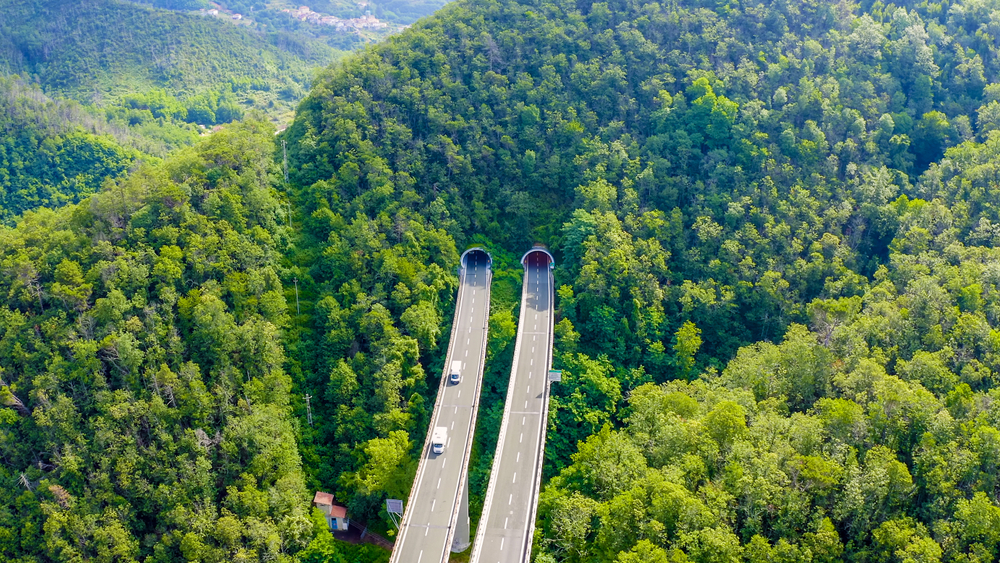
Please note that in some parts of Italy (such as around Milan), payment of tolls now needs to be done online. Ticket booths have been removed or abandoned and instead clear signage will indicate the website that you will need to visit to make payment. Cameras automatically record your registration number and you will need to log in online to make payment within a certain time period.
If you need to stop whilst on the Autostrada, then look out for an Autogrill. These are great places. You’ll be able to fill up with fuel here as well as buy refreshments. Unlike most UK service stations, the food here is surprisingly good! You’ll also find restrooms here. Other similar companies include MrChef, Chef Express and others.
Top tips if bringing your own car to drive Italy
- Make sure you have the correct equipment in your car if you’re taking your own vehicle to Italy. This includes a reflective safety vest and safety triangle. At certain times of year, your vehicle will also need to have been fitted with winter tires or you will need to have snow chains in the car. Dependent on your car, you may also need headlamp beam deflectors.
- Just as when hiring a car in Italy, you will need to have the correct license, whether that’s a UK Driving license, an EU license or a non EU license with an International Driving Permit.
- You will also need to carry a copy of your vehicle insurance documents and V5 registration document.
- If coming from the UK to Italy with your car, your vehicle must display the letters UK. This can be either incorporated in the car registration plate or can be displayed as a separate sticker. Please note that GB stickers are no longer valid.
- Be aware that if you are driving from the UK, you can not take the following items into the country – meat or meat products, milk and dairy products, fresh fruit and vegetables, plants and plant products.
Top tips for driving in Italy
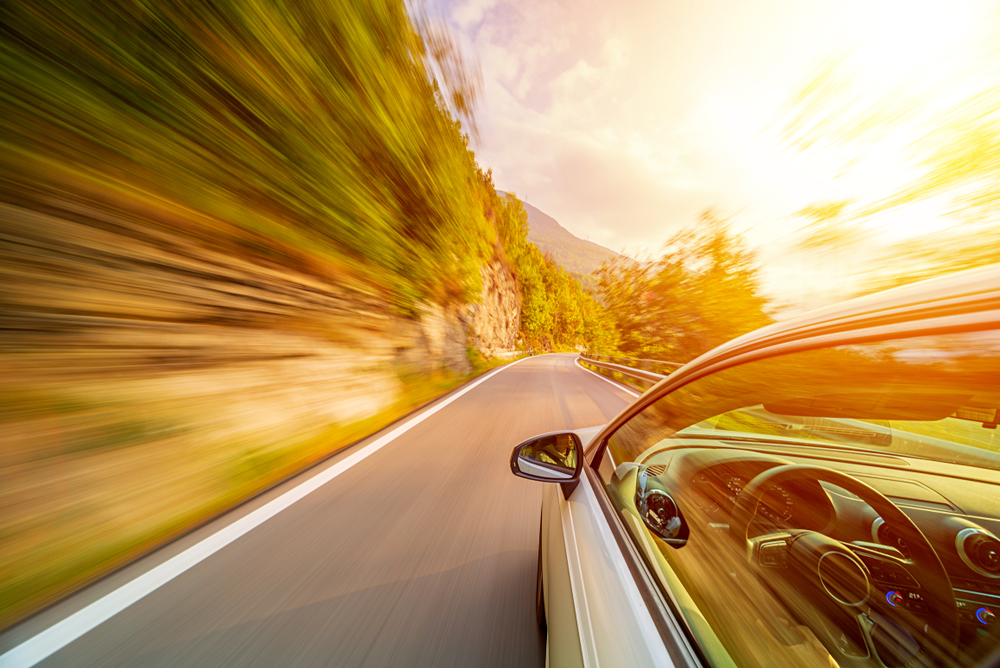
- Italians drive on the right hand side of the road.
- Italian drivers are confident and assertive and are big fans of using hand gestures! This can even across as aggressive at times but don’t let it intimidate you! You are likely to find that Italians can often drive extremely close to your bumper. If they flash their headlights at you, particularly on a motorway or dual carriageway, it means that they are coming up fast and we recommend you pull into the other lane to let them pass. If you’re not quick off the mark when it comes to pulling off at traffic lights, don’t be surprised if you get tooted at!
- Italian drivers can also be rather creative! We’ve encountered Italian drivers in Florence turn a one lane mini roundabout into a three lane roundabout at rush hour! Try and stay relaxed! You’ll also often find their parking rather interesting – don’t follow their lead!
- Make sure that your headlights are on when driving outside urban areas.
- Don’t turn right on a red light in Italy. This is illegal and can come as a surprise to Americans in particular!
- Don’t use your mobile phone when driving in Italy. This is illegal and you could be fined if caught (although you can expect mobile phone usage when driving to be much more prevalent amongst Italians than Brits).
- Speed limits will be displayed in kilometres not miles. The speed limit is 130 on motorways, 110 and 90 respectively on major and minor highways and 50 on urban roads. Be aware that the speed limit on motorways and highways can be reduced by 10-20 kilometres in poor weather conditions.
- Be aware of the autovelox machines. These are speed cameras and will record your speed. If you are over the limit, you will find yourself being sent a fine to pay. Legally, there must be signs that cameras are in place so watch out for signs that say ‘controllo elettronico della velocita.’ Some autostradas now also have average speed cameras in place. They take your photograph at two separate points and record your average speed between those points. If it’s above the legal limit, you will again receive a fine. Speeding fines can range from €40 to over €4000.
- If you are stopped by the police for speeding or for another driving offence, police are entitled to impose on-the-spot fines to drivers of foreign-registered cars. They are also entitled to collect a quarter of the maximum fine at the time. If they do so, they must provide a receipt. In some cases, you may find that there will be a 30% reduction in the cost of the fine if you make payment within five days.
- Watch out for Limited Traffic Zones (ZTL) within Italian cities. These areas are essentially off limits to drivers without the appropriate permit. Drive in a ZTL zone without a permit and, once again, you’ll find you’re issued with a hefty fine. If you’re staying in a hotel or Italian apartment rental within a ZTL zone, Don’t be surprised if this lands on your doorstep months after your holiday is over.
- If driving on an autostrada, stay in the right hand lane. If you need to overtake, move into the left hand lane.
- If you received either a speeding fine or ZTL fine when in a hire car, be aware that the car rental company will also charge an additional administration charge on top of the fine.
- Be aware that, if travelling in rural Italy, you may find that some of the smaller roads are unpaved. Not only that but some of the roads in Italy are dangerous if you don’t drive with care. The views can be distracting along a number of these such as the SS 106 from Taranto to Reggio Calabria, along the Stelvio pass in the Alps or on the Amalfi Coast. Keep your eyes on the road and take your time!
- Don’t rely too much on GPS and your sat nav! You can often find more than one town with the same name in Italy so triple check where your sat nav is sending you instead of following it blindly! Sat nav systems can also send you into ZTL zones, down alleyways which are simply too narrow to drive through or even along lanes that have steps at the end of them! Remember – many of Italy’s towns and villages were built hundreds, if not thousands of years before cars were invented! Have a traditional paper map with you just in case!
Staying safe whilst driving in Italy
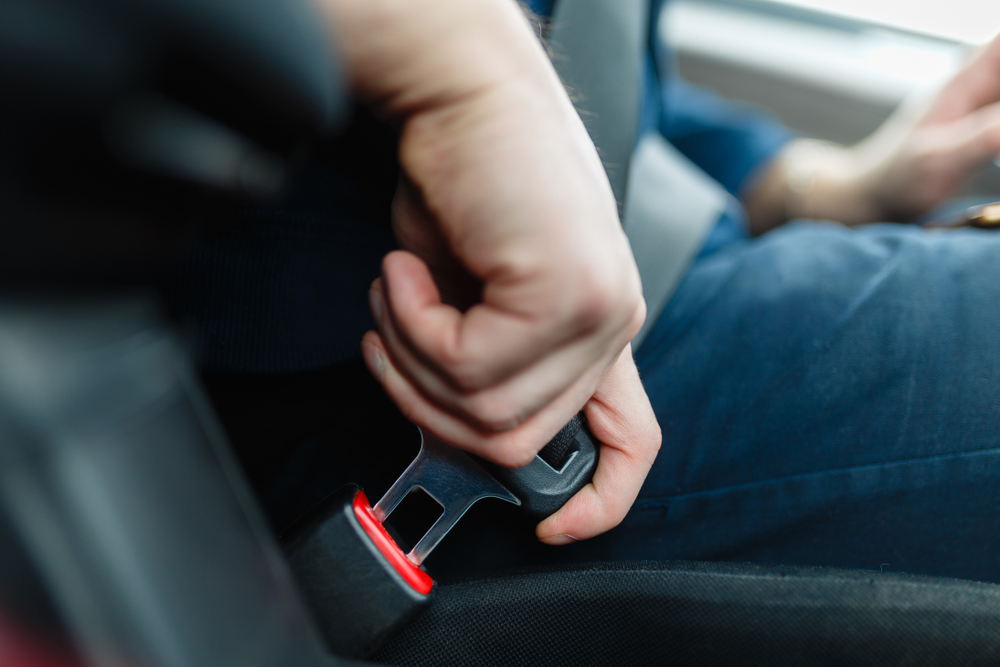
- Wear a seat belt. It is compulsory to buckle up in both the front of rear seats of cars equipped with belts when driving in Italy. The fine for failing to do so can be up to €350.
- Don’t leave any valuables on display in your car. Whilst Italy is a safe country, avoid attracting any unwanted attention and don’t leave items on display that might tempt someone to break in. Even when at the service station, if heading inside to pay, make sure your car is locked. If you can possibly avoid it, don’t even leave valuables locked in the boot. As a general rule, break-ins are more common in the south of Italy in regions such as Catania and Sicily so pay extra attention if holidaying there.
- Don’t drink and drive. Italy has a strict alcohol limit of 0.5% mg of blood alcohol. This is less than the legal limit of 0.08% in England, Wales and Northern Ireland but is the same as Scotland. This means that you can’t have more than one glass of wine before you risk being over the drink drive limit. As a result, if you plan to have a few drinks, make sure you have a designated driver that won’t drink or plan to take a taxi or use public transport.
- If travelling with young children, be aware that children younger than 12 or under 150 cm must use an appropriate car seat or booster seat. If renting a car in Italy, you should be able to book a car seat in advance, but to be absolutely sure that one will be available, you may want to bring your own. Most airlines should check these in free of charge. Car seats must be fitted rear facing until the infant is at least 15 months old.
Top Tips for Parking in Italy
Driving in Italian city centres can be stressful so if you are driving, you may want to consider parking on the outskirts of the town and walk in. However, if you do want to park in the centre of a city or town, you may often find that parking spaces are marked with different colours and it’s important to understand what they mean.
Blue Spaces: These signal that it is paid parking. Payment can either be made at a nearby machine or via an app (details of which would be posted on the machine). Alternatively, in some cases you may need to visit a tabacchi to purchase a parking ticket. It’s useful to have coins to hand for payment machines but you will find that more now accept credit and debit cards. Make sure you also have details of your car registration number as you will often need to enter this when purchasing a ticket. That said, always check the signage as, at certain times, some of these zones can still be free of charge at certain times of the day or on Sundays.
White Spaces: These are free but you need to make sure that they are open to everyone as sometimes they are reserved for residents only. Even if it is free parking, it may also only be for a limited period of time. Make sure you . Car rentals in Italy should usually have a parking disc (disco) in them which you will need to display on your dashboard to show your arrival time. However, if you don’t have one, you can purchase one at a tabacchi.
Yellow Spaces: These are disabled parking or loading zones.
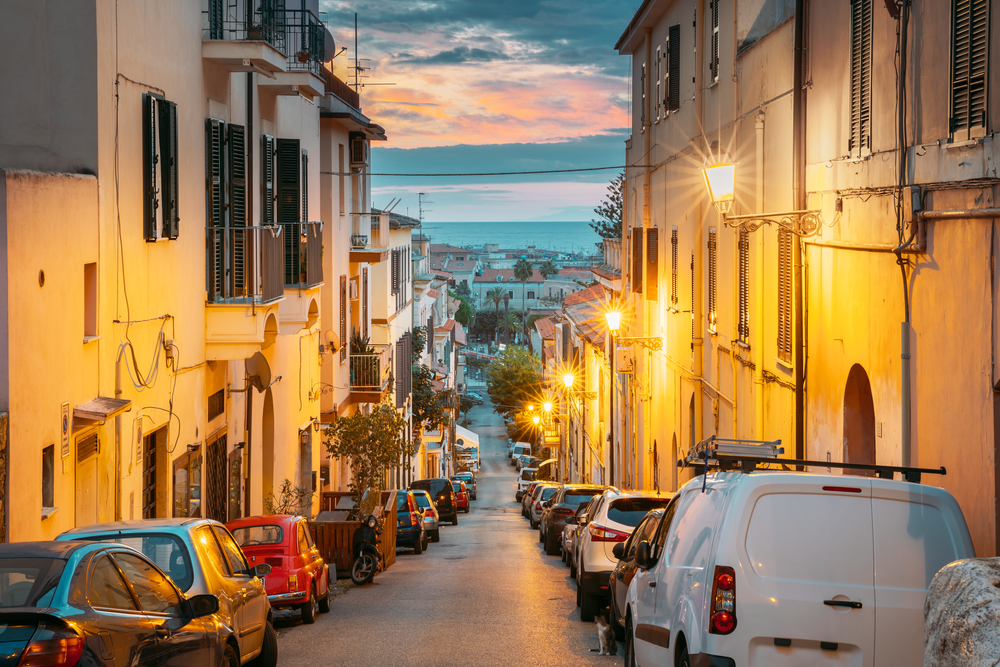
If a space is signposted as ‘passo carrabile‘ then definitely don’t park there! This is a tow away zone.
In larger cities, you will also find private car parks and private garages. These tend to be the most expensive parking options.
You will notice that many of the streets in Italy can be narrow and don’t provide much room for cars to pass. As a result, when parking on the roadside, we recommend you put your wing mirrors in to minimise the chances of your car being damaged! As a general rule, you’ll probably find Italian cars a lot more scraped and dented than at home and there is a reason for this!! This is often as they will choose to fill any spare space they can, even if in reality it’s too small! Another reason to make sure your Italian hire car has car hire excess insurance!
Top tips if you breakdown in Italy
If your car breaks down, turn on your emergency hazard lights and move to the side of the road. Put on your neon safety vest and place the neon safety triangle at least 50 metres behind your vehicle to warn oncoming motorists (100 metres if it is an Autostrada). The number for roadside assistance is 803.116. Calling this number connects you with the Automobile Club d’Italia (ACI). If you breakdown on the Autostrada, then you will find yellow emergency call boxes even couple of kilometres. You can use these to call for help.
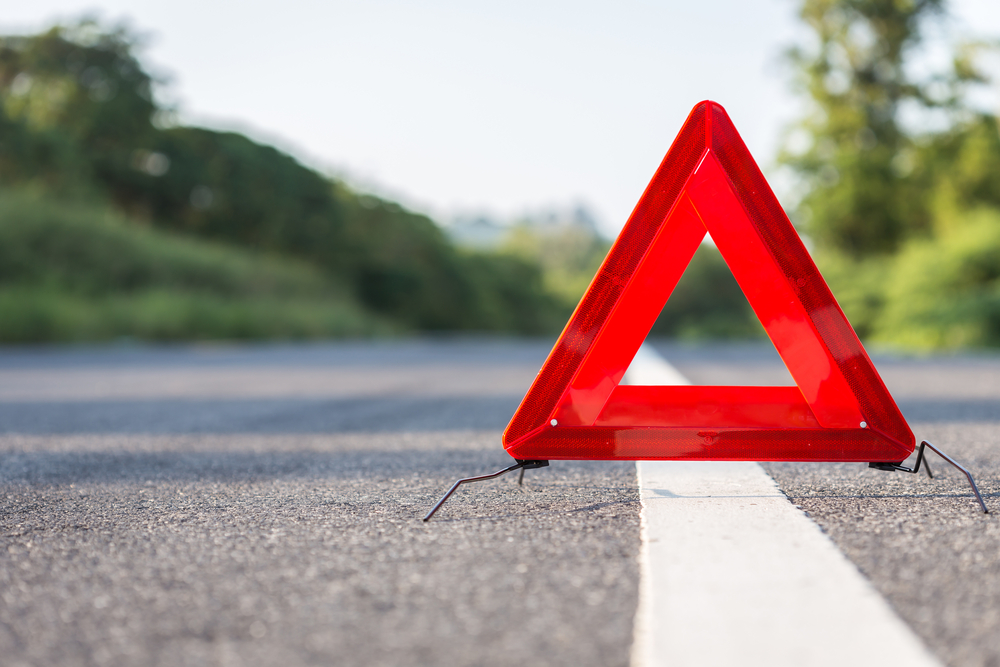
If you involved in an accident in Italy, then you need to follow the same procedure with regards using your hazard lights and your emergency warning triangle. You will then need to ring the police. Dial 112. As with an accident in your home country, make sure to swap details with any other parties involved and any witnesses. Take photos of any vehicles involved along with their car registration numbers. If you have rented a car in Italy, make sure you contact them immediately to inform them of the accident and to report any damage. They will then advise you on any next steps.


